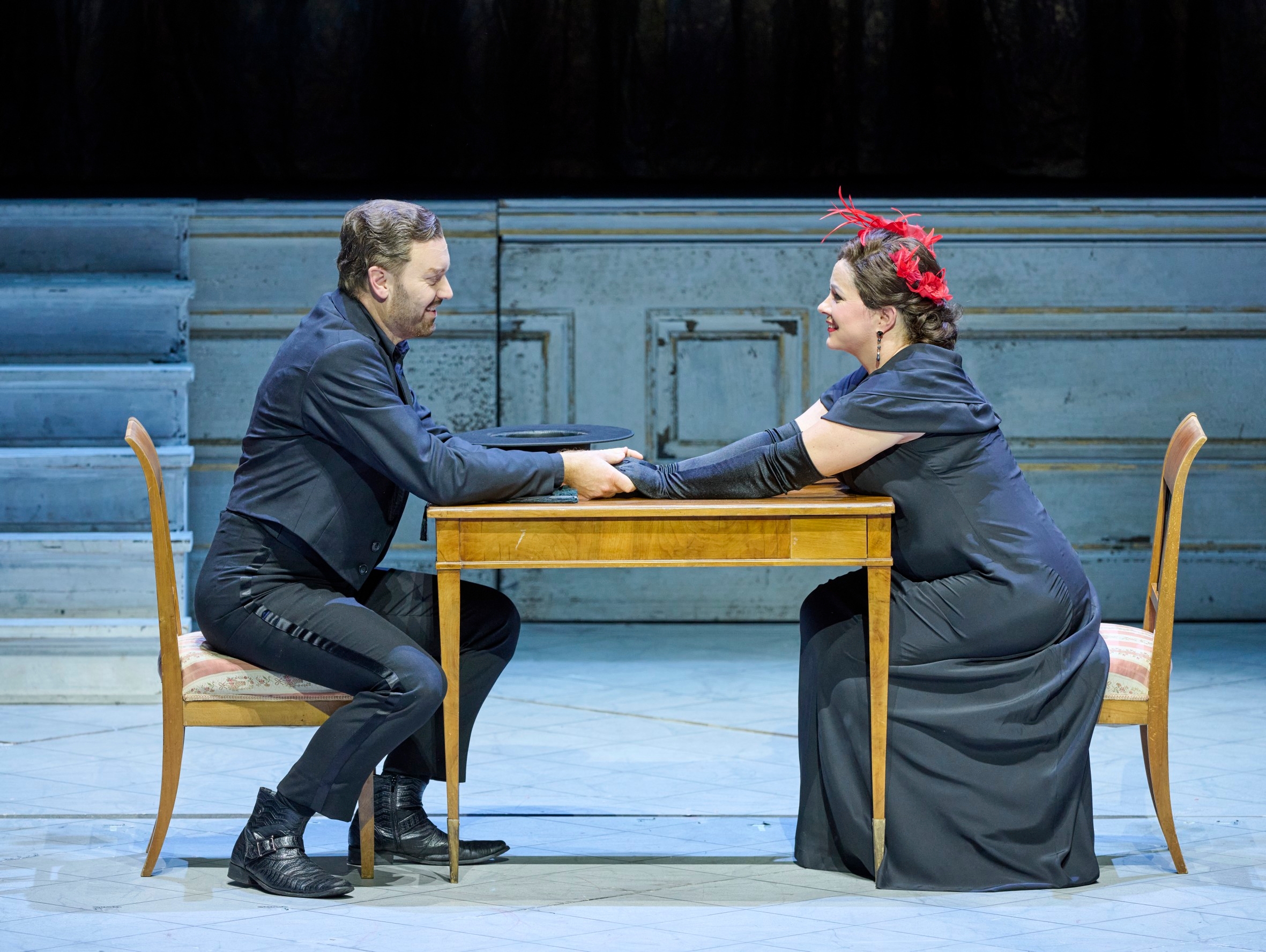
Short Summary
Belmonte arrives at Bassa Selim's estate in search of his fiancée Konstanze, who has been kidnapped by pirates along with Blonde and her lover Pedrillo.
He has bought the three of them as slaves and fallen in love with Konstanze. However, she wants to remain faithful to Belmonte and is prepared to endure the torture she is threatened with. A planned escape by Belmonte and the three prisoners fails. The Bassa recognizes Belmonte's plea for mercy as the son of his mortal enemy, who once stole his beloved and forced him to leave his homeland. But he gives everyone their freedom: »If you can't win someone over by doing them good, you have to get rid of them.«
Die Entführung
aus dem
Serail
Storyline
The Spanish nobleman Belmonte appears before the estate of Bassa Selim in search of his fiancée Konstanze. She has been kidnapped by pirates together with her servant, the English maid Blonde, and Belmonte's servant Pedrillo.
He meets Osmin, the overseer of the estate, who hostilely refuses to give him the information he wants. Only after his reunion with Pedrillo does Belmonte learn that Konstanze and the couple Blonde and Pedrillo have been bought as slaves by Bassa Selim. The latter loves Konstanze, but has not yet been heard.

As a European who has converted to Islam, he still has »the delicacy not to force any of his wives to love him«. Belmonte can secretly convince himself of this when the Bassa appears with his entourage and Constanze and gives in to Constanze's renewed pleas to postpone her decision. Pedrillo succeeds in introducing Belmonte to the Bassa as a master builder and thus gains him access to the palace against Osmin's resistance.

Blonde, who was given to Osmin as a slave, confidently defends herself against the advances of the enamored Turk. Once again, the Bassa courts Constance's favor, but she feels obliged to Belmonte. She would rather endure the torture threatened by the offended Bassa than be unfaithful to Belmonte.
The reunion is imminent, Belmonte is expecting his lover. When the two European couples come face to face, their joy is severely dampened:

Belmonte and Pedrillo doubt the women's fidelity. Konstanze and Blonde are deeply hurt. The abduction of the women planned for midnight fails because Osmin, who has been made drunk by Pedrillo, wakes up too early from his intoxication. Osmin sees that his hour of revenge has come.

The Bassa recognizes in Belmonte, who begs for mercy, the son of his mortal enemy who once stole his beloved and forced him to leave his fatherland. The two couples await death. But the Bassa gives them all their freedom: »If you can't win someone over by doing them good, you have to get rid of them.« Everyone sings the praises of the Bassa's generosity, only Osmin, boiling with impotent rage, falls out of character. The Bassa remains alone.
»It's exciting when the singers often let the actors do the talking. Not because they can't, they speak too, but because they address the question of singing and speaking together,« says director Hans Neuenfels in conversation with artistic director and dramaturge Klaus Zehelein. By doubling all the singing roles with actresses and actors, Neuenfels succeeds in making the actors' inner emotional conflicts effective in highly poetic reflections. In The Abduction from the Seraglio, according to the director, Mozart sets existential questions to music; the production takes up this thread and leads the audience deep into the different emotional levels of the actors. Hans Neuenfels: »The different states of perception, of feeling, of being can take place simultaneously through the splitting up of the characters. We are several at the same time, and this becomes visible through this interpretation, but not in the sense of schizophrenia. Identity is not a fixed quantity. The 'I' is fundamentally unreliable.«
»I will make the symphony, the chorus in the first act and the final chorus with Turkish music,« wrote Wolfgang Amadeus Mozart to his father Leopold on August 1, 1781 about the planned new Singspiel. Mozart implemented the ubiquitous exotic »alla turca« fashion musically with recourse to elements of the popular »Jantischarenmusik« and expanded his orchestra accordingly with instruments such as the bass drum and the triangle. The »exotic« element is only one aspect of this major departure in the genre of the German Singspiel. Carl Maria von Weber's assessment that Mozart had already reached the »maturity level« of his music with the Entführung became famous. In fact, with this score, the 26-year-old presented himself as a complete, yet ingeniously sensitive composer with an incomparably fine sense of musical dramaturgy and great innovative power. The use of terrace dynamics with their rapidly changing forte-piano contrasts, which are more pronounced here than in any other of Mozart's stage works, is exemplary. The work proved to be a challenge even for the most discerning ears: »An awful lot of notes, dear Mozart«, Joseph II is said to have remarked after the first performance. But Mozart knew: »Just as many notes, Your Majesty, as are necessary.«
»The story of the Abduction from the Seraglio has its roots in France, specifically in the so-called »histoires galantes«, a genre of novels that became increasingly orientalized in the course of the first great exotic fashion towards the end of the 17th century. Despite a wide range of variation within the genre, one plot line became constitutive for the genre: the separation of a pair of lovers due to adverse circumstances and their efforts to find their way back to each other. Under the influence of Orientalism, the stories were gradually relocated entirely to the Middle East. The circumstances that led to the separation of the lovers were almost always shipwrecks with subsequent capture by pirates. The story ends when the ship sails into an (Algerian) port city, where the Europeans are immediately sold. In this way, the unsuspecting women fall into the hands of a pasha who either incorporates them into his own harem or delivers them to the sultan in Constantinople. It is only when the seeking lover enters the foreign world that the fate of the Europeans takes a turn.« (From: Thomas Betzwieser: Exotik Fremde Exil, program book for the production).








